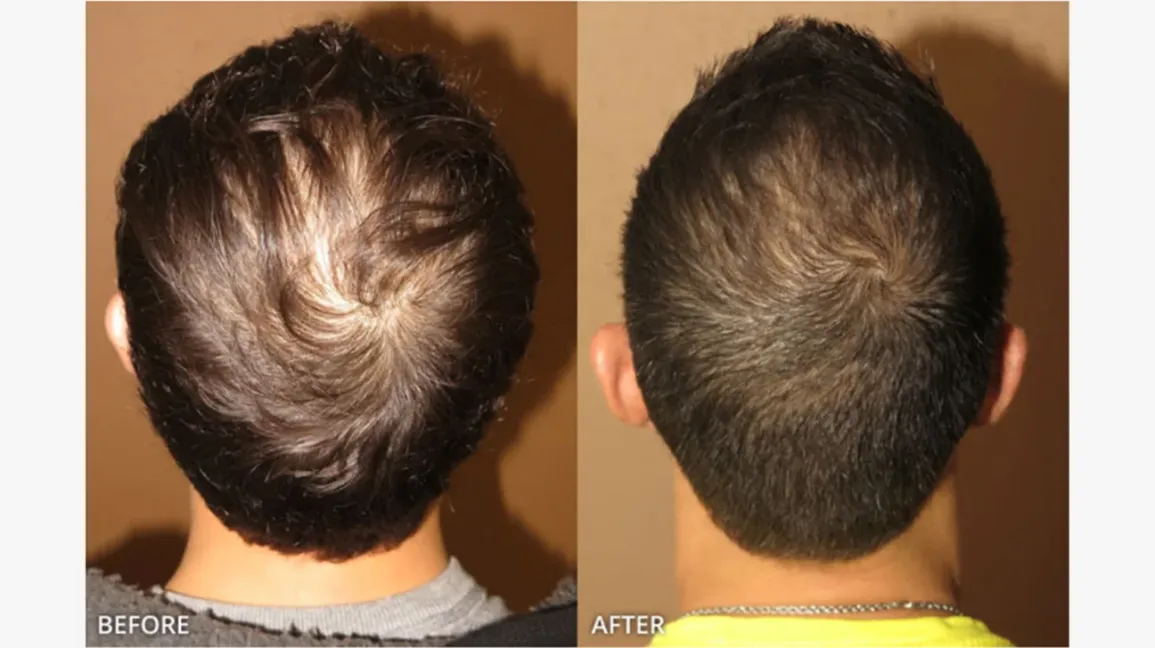If you are considering hair transplantation as a solution to hair loss, Colombia has emerged as a prominent destination offering high-quality procedures at competitive prices. Over recent years, medical tourism in Colombia has grown significantly, thanks to its state-of-the-art clinics and highly skilled healthcare professionals.
The country combines advanced medical techniques with warm hospitality, making it an appealing choice for individuals seeking effective hair restoration treatments.
Why Choose Colombia for Hair Transplantation?
Choosing Colombia for hair transplantation can be attributed to several compelling reasons:
- Cost-Effective Solutions: One of the most significant factors drawing individuals to Colombia is the affordability of hair transplantation procedures. Compared to North American and European countries, Colombia offers similar, if not superior, levels of care at a fraction of the cost.
- Highly Qualified Medical Professionals: Colombia boasts a vast number of highly trained and experienced surgeons specializing in hair restoration. These professionals often have international training and certifications, ensuring that patients receive world-class treatment.
- State-of-the-Art Clinics: Many Colombian clinics are equipped with cutting-edge technology and adhere to international standards. These facilities follow strict hygienic protocols and employ advanced techniques such as FUE (Follicular Unit Extraction) and DHI (Direct Hair Implantation).
- Comprehensive Care Packages: Clinics in Colombia often provide comprehensive care packages that include pre-surgery consultations, post-surgery follow-up, accommodation arrangements, and even guided tours. This holistic approach ensures that patients have a seamless and stress-free experience.
- Warm Hospitality and Culture: Colombians are known for their warm hospitality and friendliness. This welcoming atmosphere can make the entire treatment journey more comfortable and pleasant for international patients.
- Beautiful Recovery Environment: The scenic beauty and comfortable climate of Colombia make it an ideal location for recovery. Patients can enjoy the picturesque landscapes and vibrant cities while recuperating, adding an element of relaxation to their medical journey.
Types of Hair Transplant Procedures Available
When considering hair transplantation, it is essential to understand the different types of procedures available. Each method has its unique advantages and can be tailored to meet the specific needs of the patient.
In Colombia, the most common and effective hair transplant techniques include Follicular Unit Extraction (FUE) and Direct Hair Implantation (DHI).
Follicular Unit Extraction (FUE)
Follicular Unit Extraction (FUE) is a minimally invasive technique that involves the extraction of individual hair follicles from a donor area, typically the back of the scalp, and implanting them into the balding or thinning areas. This method is popular due to its minimal scarring and faster recovery time.
Direct Hair Implantation (DHI)
Direct Hair Implantation (DHI) is an advanced variation of the FUE method. This technique uses a specialized tool to directly implant the extracted hair follicles into the recipient area without creating incisions. DHI allows for greater precision in the placement and angle of hair follicles, leading to more natural-looking results.
Strip Harvesting (FUT)
Strip Harvesting, also known as Follicular Unit Transplantation (FUT), involves removing a strip of skin from the donor area, from which hair follicles are then dissected and transplanted. Although this method can leave a linear scar, it allows for the transplantation of a large number of grafts in a single session.
Platelet-Rich Plasma (PRP) Therapy
Often used in conjunction with hair transplant procedures, Platelet-Rich Plasma (PRP) therapy involves injecting a concentration of the patient’s own platelets to stimulate hair growth and improve the healing process. PRP can enhance the overall success and longevity of the hair transplant results.
The Cost of Hair Transplantation in Colombia
Hair transplantation in Colombia is not only effective but also budget-friendly. Here are key points regarding the cost:
- Affordable Prices: Procedures cost significantly less than in North America and Europe, often 50-70% cheaper.
- Transparent Pricing: Clinics provide clear pricing structures with no hidden fees.
- High Value: Despite lower costs, patients receive excellent quality care.
- Comprehensive Packages: Costs often include consultations, surgery, post-op care, and accommodation.
- Financing Options: Many clinics offer flexible payment plans to make procedures more accessible to international patients.
Finding a Qualified Surgeon
Selecting a qualified surgeon is crucial for achieving successful hair transplantation results. Begin by researching surgeons’ qualifications, focusing on those with international certifications and extensive experience in hair restoration.
Look for clinics that showcase before-and-after photos of past patients and read reviews to gauge patient satisfaction. It’s essential to ensure the surgeon utilizes the latest techniques such as FUE and DHI. Additionally, consider scheduling consultations to discuss your expectations and evaluate the surgeon’s approach.https://colombiahairtransplant.com
Comprehensive care packages that include follow-ups are indicative of a reputable clinic, providing peace of mind throughout the medical journey.
What to Expect During the Procedure
Undergoing a hair transplantation procedure can be a life-changing experience, and knowing what to expect can help alleviate any apprehensions you might have. Here is a general outline of what the process entails:
- Initial Consultation: Your journey begins with a detailed consultation where the surgeon assesses your hair loss condition, discusses your desired outcomes, and determines the most suitable procedure for you.
- Pre-Operative Instructions: Before the surgery, you will receive specific guidelines to follow, such as avoiding certain medications, discontinuing smoking, and refraining from alcohol consumption to ensure optimal results.
- Day of the Procedure: On the day of the surgery, you will be greeted and prepped by the medical team. Local anesthesia is administered to ensure a painless experience.
- Extraction Phase: Depending on the chosen method (FUE, DHI, or FUT), hair follicles are extracted from the donor area. This phase is carried out with great precision to preserve the integrity of the hair follicles.
- Implantation Phase: The extracted hair follicles are then implanted into the thinning or balding areas. The surgeon meticulously places each follicle to achieve a natural-looking hairline and density.
- Post-Operative Care: After the procedure, you will receive detailed post-operative care instructions to promote healing and ensure the success of the transplant. This includes information on how to care for the transplanted area, medications to aid recovery, and what activities to avoid.
- Recovery Period: Initial healing generally occurs within a few days. Most patients can return to regular activities within a week, although complete regrowth of transplanted hair can take several months.
- Follow-Up Appointments: Post-surgery follow-ups are crucial to monitor the progress and address any concerns you may have. These appointments help ensure that the healing process is on track and that you are satisfied with the results.
Post-Operative Care and Recovery
Post-operative care is vital to ensure the success and longevity of your hair transplant. Immediately following the procedure, you should avoid touching or washing the transplanted area to protect the newly implanted follicles. Your surgeon will provide specific instructions on how to gently cleanse your scalp and care for the donor site.
Medications, including antibiotics and pain relievers, may be prescribed to prevent infection and manage discomfort. You should also refrain from strenuous activities and direct sun exposure for a few weeks. Attending follow-up appointments will help monitor your progress and address any concerns, ensuring optimal recovery.
Potential Risks and Complications
While hair transplantation in Colombia is generally safe and effective, it’s crucial to be aware of potential risks and complications. Understanding these can help you make an informed decision and prepare for the procedure comprehensively.
- Infection: Although rare, infections can occur if post-operative care instructions are not followed meticulously.
- Scarring: Depending on the method used, such as FUT, some degree of scarring may be inevitable.
- Swelling and Bruising: Mild swelling and bruising around the forehead and eyes may occur and generally subside within a few days.
- Itching: Itching is common during the healing process but can be managed with prescribed medications.
- Temporary Shock Loss: Some patients may experience temporary hair shedding, known as shock loss, which typically resolves itself in a few months.
- Uneven Growth: Initially, hair growth may appear uneven, but this usually balances out as new hair continues to grow.
- Numbness: Temporary numbness in the donor or recipient areas can occur but generally resolves over time.
In conclusion
Undergoing hair transplantation in Colombia offers a compelling blend of advanced medical expertise, cost-effective solutions, and the ease of comprehensive care packages, making it a sought-after destination for those seeking hair restoration. With highly trained medical professionals, state-of-the-art clinics, and an inviting cultural atmosphere, Colombia provides both quality medical care and a supportive environment conducive to recovery.
By understanding the available procedures, costs, potential risks, and necessary post-operative care, patients can make informed decisions and embark on a transformative journey towards renewed confidence and improved appearance. .




